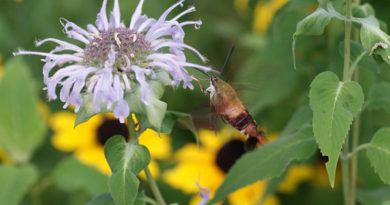Hiking in Quebec’s National Parks

A highlight of Whales & Nature Trails of Quebec is the opportunity to hike in four diverse national parks: Saguenay Fjord, Hautes-Gorges-de-la-Riviere-Malbaie, Grands-Jardins and Jacques-Cartier. Exploring these different regions by foot, you’ll pass through glacial valleys and stop to admire dramatic mountains and gorges.
If traveling in autumn, deciduous forests transform into a tapestry of gold, bronze and crimson, making for wonderful photo opportunities. You’ll spy sugar, silver and red maples, perhaps most brilliantly displayed in Jacques-Cartier National Park, and conifers farther north.
The Charlevoix Biosphere Reserve, recognized as a UNESCO World Heritage Site, encompasses both Hautes-Gorges-de-la-Riviere-Malbaie and Grands-Jardins. It also includes Saguenay-St. Lawrence Marine Park, the base of our whale-watching excursions.

Saguenay Fjord National Park
This national park protects the shoreline of the 65-mile-long Saguenay Fjord and works in conjunction with Saguenay-St. Lawrence Marine Park to protect the land and waters of this striking region. Take a 3-mile hike up a river that flows into the fjord and emerge from dense evergreens to a scenic overlook of Sainte Marguerite Bay. Walk down to a stretch of sandy beach where the whale songs of resident belugas can be heard from 100 yards off the coast. Keep your eyes out for a pod of these highly vocal cetaceans, which communicate through chirps, trills, clicks, squeals and whistles.

Hautes-Gorges-de-la-Riviere-Malbaie National Park
You’ll explore the tallest rock faces east of the Rockies, a series of ice-carved gorges cut deep into a high mountain range above the Malbaie River. Forested slopes of ash, elm, birch, maple and fir sweep down to the blue ribbon of river, and the landscape is dotted with glacial lakes and cascading waterfalls. White-tailed deer are found in lowland valleys, moose browse in boreal forests and woodland caribou meander atop mountains on the alpine tundra. Peregrine falcons and golden eagles perch on high cliffs and osprey fish from winding rivers. Cars are not permitted in the park, so you’ll be able to hike in quiet serenity.

Grands-Jardins National Park
The name of this national park—“great gardens”—refers to the unique northern flora found here. Blanketing the ground, rock walls and trees are more than 200 species of lichen, a major food source for woodland caribou in winter. Wildlife is hidden in every corner of the park, from red fox, lynx and snowshoe hare to black bear, coyote and gray wolf. Birdlife includes water birds such as common loon and Barrow’s goldeneye and birds of the forest such as the black-backed woodpecker and spruce grouse.
Your naturalist guide will lead you through the park’s different vegetation zones—taiga, tundra, deciduous forest, boreal forest and alpine. You’ll walk among ancient stands of aspen, balsam fir, black spruce, jack pine and larch while admiring some of the area’s 60 lakes, which are filled with brook trout and Arctic char. From the park’s mountain summits, the 33-mile-wide Charlevoix crater is visible, formed by a massive meteorite 360 million years ago.

Jacques-Cartier National Park
You’ll have a chance to wander through spectacular fall foliage at this national park, a vast mountainous plateau with a 1,800-foot-deep channel. This 230-square-mile river valley is home to a variety of wildlife, including moose, beaver, river otter and porcupine. Myriad birds can be seen soaring above—130 species inhabit the park. A boreal forest of black spruce sits atop the plateau, while the valley is dominated by deciduous trees such as sugar maples and yellow birch ablaze with autumn coloring.
Just north of Maine and easily accessible to U.S. travelers, Quebec offers a unique North American travel adventure. Our carefully crafted itinerary takes you off the beaten path, highlighting the varied ecosystems found within four glorious national parks and a marine reserve. The distinctive terrains of this French-Canadian province provide exciting hiking opportunities on top of some of the world’s best whale watching—we hope you’ll consider joining us!
About the author: Emily Goodheart View all posts by Emily Goodheart
Emily is a Content Writer at Natural Habitat Adventures with a background in cultural anthropology and wildlife conservation. She has explored more than 20 countries, including Nat Hab trips to Tanzania and the Arctic, a wildlife-focused gap year in South Africa and Zimbabwe, a Nat Geo student photography expedition to the Galapagos, and Colorado College courses in Italy and India where she wrote about foodways and mythology.




